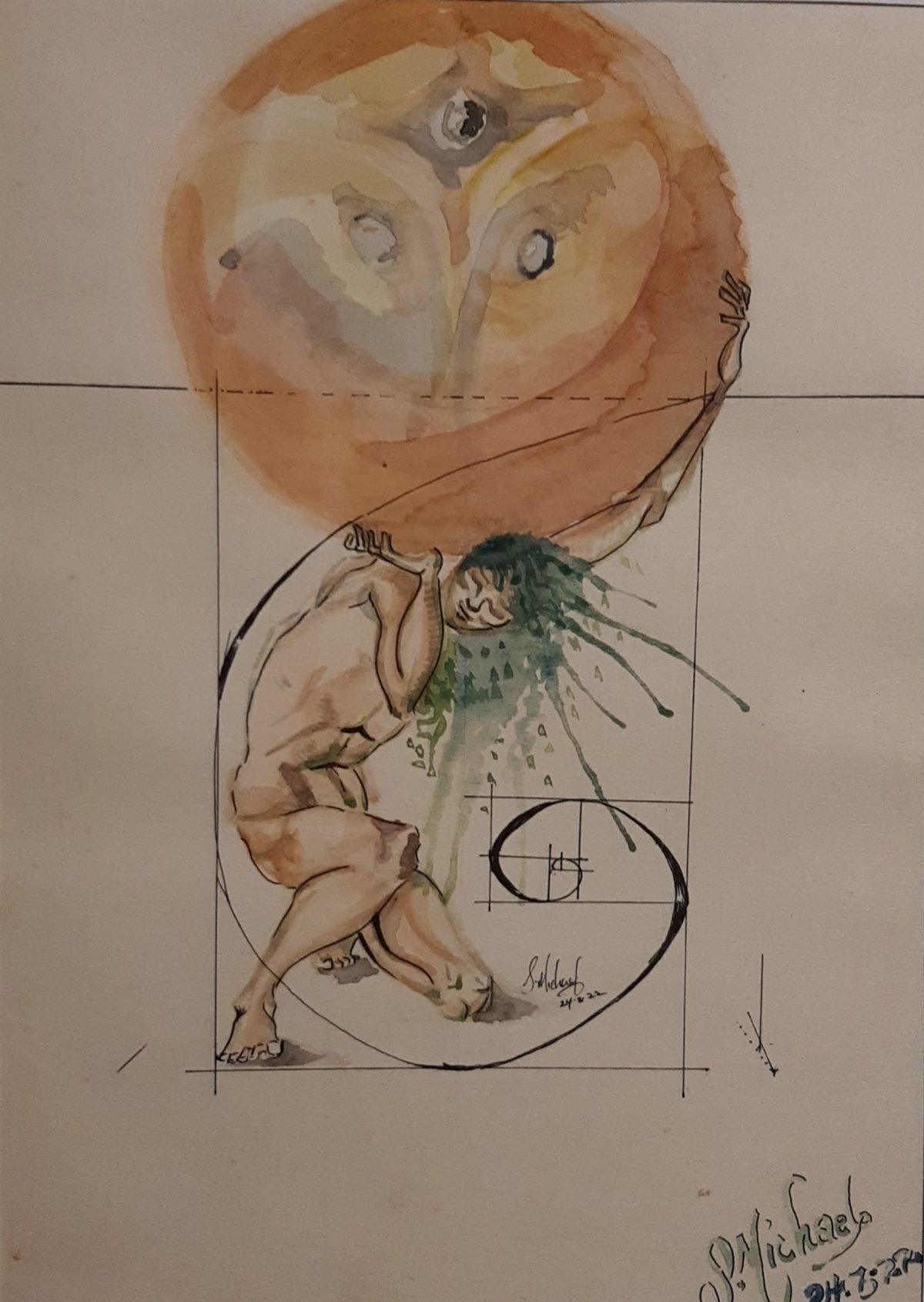Lines are ubiquitous in the natural and man-made environments. Look out your window, which itself is an arrangement of lines creating shape, you will likely see the wires of GPL and GTT. These are lines. The poles they are attached to are lines also, thick vertical lines. In the natural world, lines are everywhere. Look closely at a leaf. The veins on a leaf are lines. Even the overgrowth of grass in one’s yard can be read as lines. Depending on the type of grass the thickness of the grass will vary.
The presence and absence of line in art is perhaps as important as colour. Lines can be characterised by how they define things and how they function. In the last article, as I wrote about Alyce Cameron’s Oshun I referred to an invisible line. In fact, this was an example of an implied line. Needless to say, I did not want to jump the gun. Now that we have gotten to discussing line, I use correct art terminology to identify it. An implied line is one that is suggested and not actually present. This you may have already inferred. Implied lines are suggested by a pointing finger, a gaze, or movement of the body in space.


